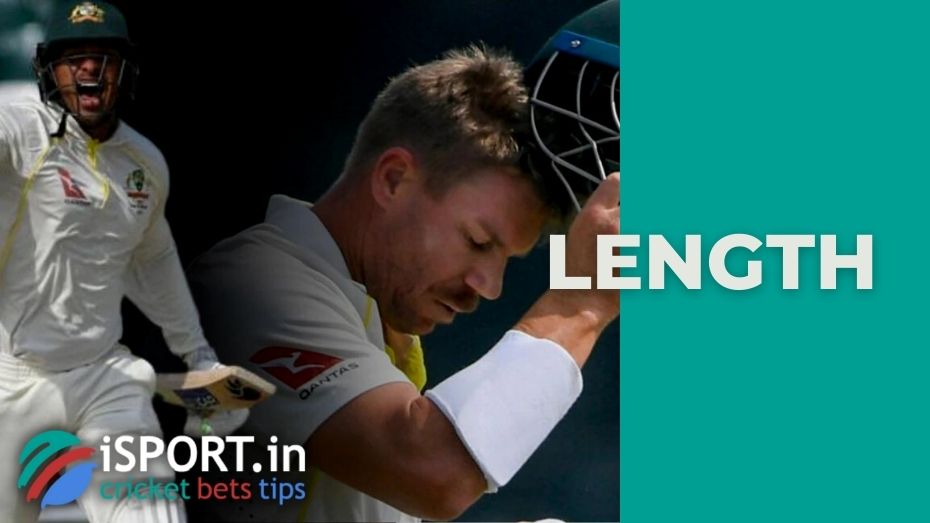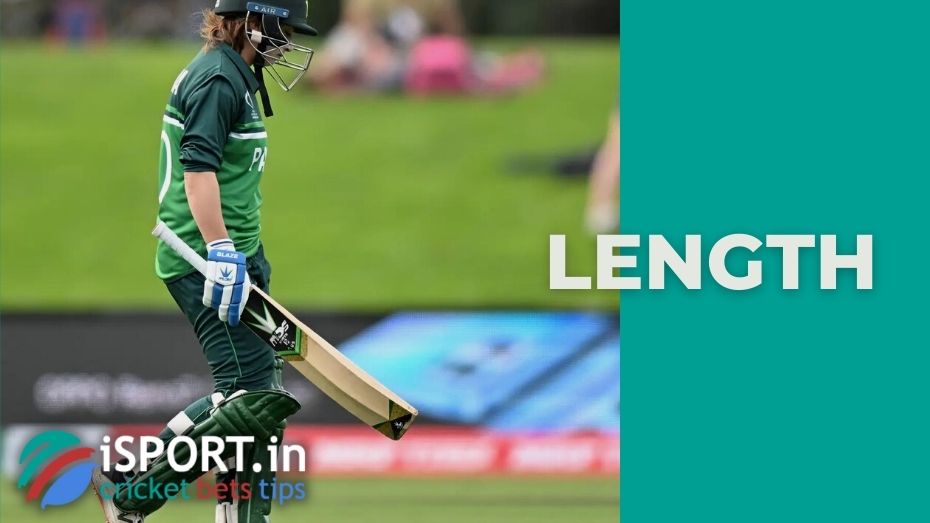Length

Length in cricket – the length of the pitch, that is, the distance on the pitch that the ball overcomes in the direction of the batsman after the bounce. It is almost always mentioned in the same context with line.
Length in Cricket: Understanding
There are three main types of length:
- Short (the ball bounced closer to the bowler);
- Full (the ball bounced closer to the batsman);
- Good length (the ball landed in the gap, which is considered the best option).
Length in cricket actually determines the height that the ball has reached after the bounce until it comes into contact with the batsman’s bat or the player himself. A ball that is served at a distance that is too short is simple to hit; a ball that is in the full category also provides practically no severe hazard to a player who is using a bat since it seldom moves sideways horizontally. Good length is defined as a compromise option because it bounces at a sufficient distance from the batsman so that the deviation is sensitive enough for him.
On the other hand, a player with a bat is still able to reach the projectile, which significantly reduces the probability of an out. This is why good length in cricket is considered to be a compromise option.
From three to four meters in front of the batter is considered a decent length in cricket for slow bowlers, while a distance of six to eight meters is considered a good length for speed bowlers. The appropriate length, on the other hand, may be somewhat different based on the state of the pitch, the weather conditions, the height of the player with the bat, and his playing style. This is something that should be kept in mind.
Length in Cricket: Tactical Use
Professional bowlers possess a potent tool at their disposal: the accurate use of length in cricket. As an example, one of the most prevalent strategies includes delivering a series of hits to the short zone in order to coerce the batsman into shifting his posture in an effort to get closer to the ball. Following that, the bowler will move to full serves, which will bring the ball closer to the ground where the batter is standing.
If a player with a bat does not have sufficient time to respond fast enough by shifting his body weight from one leg to the other, then it is quite probable that he will either miss the ball or get out (in addition, the alternative of being out with a leg before wicket is also a possibility).

Another popular tactical move is to serve the ball as close to the batsman as possible with such force that the projectile bounces to his head level. In this kind of circumstance, a player who is armed with a bat would most likely attempt to evade, and even if he is successful in avoiding an out, it will disrupt his focus.
Length in Cricket: Line and the “Corridor of Uncertainty”
To differentiate itself from length in cricket, line is mainly considered to refer to the path that the ball takes on the serve in a horizontal plane. This is the primary distinction between the two terms. In short, it estimates how far the projectile has strayed from the pitch space’s centerline. The line is often discussed with an adjustment for Off (that is, in front of the batter) or Leg (that is, behind him), rather than with an indication of a particular direction (left or right side of the pitch). This is the standard practice.
The phrase “corridor of uncertainty” is only one of the many cricket-related terms that are connected to the line. It is sufficient to keep in mind that commentators often refer to the ball as flying towards either the Off stump, the Middle stump, or the Leg stump, which are the three stumps that make up a cricket wicket.
This will allow you to comprehend the precise location of the ball. Because hitting the ball in this zone increases the danger of a batsman making a mistake (if the ball traveled beyond the defined bounds, then there is a high possibility that the serve will be termed “wide”), the “corridor of uncertainty” is an area that has a radius of about thirty centimeters along the line that runs from the off stump to the off stump.
When discussing serves in the Leg stump zone, it is common practice to refer to them as traveling down the Leg side or on the pads (in the latter instance, the term “pads” refers to the portion of the batsman’s protective equipment that protects the legs). Short serves on the Leg side are called Bodyline, that is, directed along the line of the player’s body with the bat.
In fact, the line determines whether the batsman has room for maneuver, and if so, how large it is, which in turn gives him the opportunity to choose a suitable stroke for a particular episode. So, for example, if the ball was directed directly to the center, that is, into the wicket, the player with the bat must protect it at all costs; otherwise, he risks getting an out with the wording Bowled. Interestingly, bowlers, as a rule, try not to abuse this type of serve, directing the ball into the “corridor of uncertainty” in order to force the batsman to make a mistake, but not to make a mistake himself.
This is interesting: according to statistics, in test matches, wickets are most often destroyed at Length Full (22%). In second place – Good length in cricket(10%).
